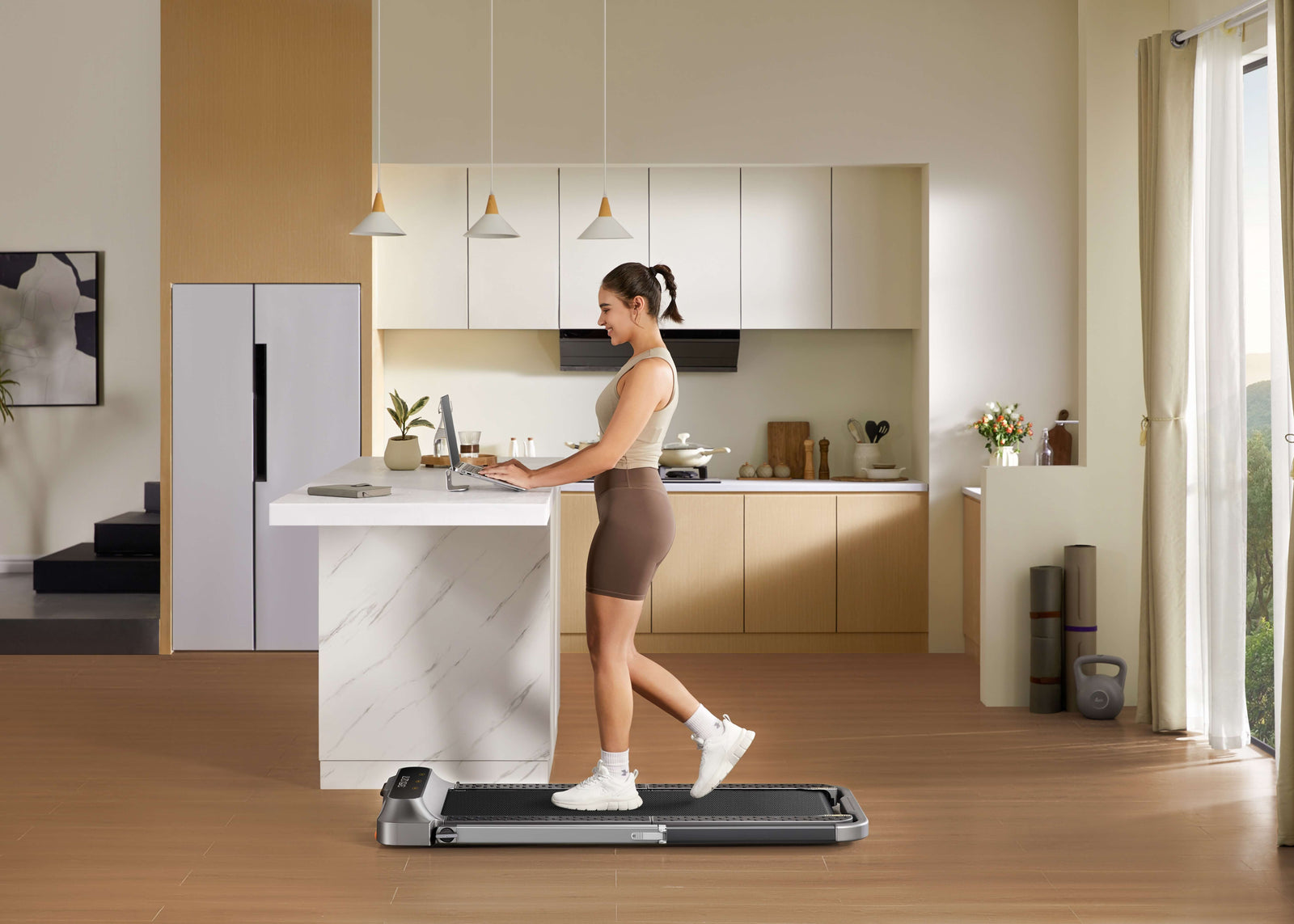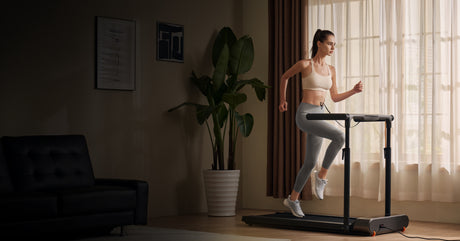Bringing a treadmill into your home, be it tucked into a spare room in a London townhouse or set up in a converted garage outside Birmingham, means more than just adding another piece of kit. It’s a commitment to your long term health and routine. Naturally, one of the first questions people ask is, “How many years can I really expect this machine to last?” While imagining your treadmill powering through countless workouts may be reassuring, knowing the typical lifespan and the factors that determine its durability is essential to making the most of your investment.
Average Lifespan of a Treadmill
So, how long can you expect a treadmill to last? For most home-use models, the average range is about 7 to 12 years. Of course, that’s only a guideline, not a fixed promise. Durability depends heavily on the quality of the build and components. A cheaper unit picked up for light use may begin to show signs of wear within a few years, while a sturdier, higher-grade treadmill, especially those built to commercial standards, can comfortably go well beyond a decade, sometimes even 15 years if properly maintained. Much like a classic British car that runs smoothly with regular tune-ups, a well-built treadmill paired with consistent care can keep you moving mile after mile.
What Affects a Treadmill’s Lifespan?
The difference between a treadmill giving you just a handful of years and one lasting over a decade often comes down to a few critical factors. Paying attention to these will greatly influence how long your machine stays in top condition.
Build Quality
The durability of a treadmill starts with its components. Premium models are built with stronger motors, reinforced decks, and thicker belts. These features are designed to withstand constant stress and friction, allowing the treadmill to cope with heavier use without breaking down as quickly.
Usage Habits
How often and how intensely you use the machine has a huge impact. A treadmill used for occasional walking will naturally last much longer than one used for daily marathon training or frequent HIIT sessions, which place considerable strain on the motor and electronics.
Weight Load
Every treadmill has a maximum weight limit, and consistently running close to that capacity makes the motor and belt work harder than intended. Over time, this added pressure accelerates wear on moving parts such as rollers and bearings.
Ongoing Care
Regular upkeep is essential. Skipping basic tasks like lubrication, belt checks, or clearing dust from the motor housing can drastically shorten the treadmill’s life. Dirt and neglect force the machine to run hotter and harder, eventually leading to premature failures.

What Usually Breaks First?
A treadmill rarely fails in one dramatic moment; instead, smaller parts tend to give way before the whole machine stops working. Spotting early wear makes it easier to fix issues before they escalate into costly repairs or the need for a new treadmill.
The first components to show strain are almost always the walking belt and deck, since they bear the brunt of every step. Without proper lubrication, friction builds up quickly, creating extra stress on the motor. Once these surfaces begin to wear, the next parts likely to follow are the drive belt and rollers, particularly the rear roller bearings, which endure constant pressure and rotation. While the main motor is built to last, it’s often the smaller, supporting pieces that fail first under repeated heat and strain.
How to Make Your Treadmill Last Longer
You don’t need advanced technical skills to extend the lifespan of your treadmill, just consistent care and a few smart habits. With a bit of regular attention, your machine can remain a steady part of your fitness routine for years, even in the unpredictable British climate.
Regularly lubricate the Belt and Deck
If your treadmill isn’t self-lubricating, this step is essential. Follow the manufacturer’s instructions and apply silicone lubricant every few months or according to your mileage. This simple job minimizes friction, easing the strain on both the belt and the motor, which are otherwise prone to premature wear.
Stay on Top of Cleaning
Sweat, dust, and pet hair are the enemies of moving parts. Wipe down handles, console screens, and side rails after each workout. At least once a month, unplug the unit and vacuum beneath and around the belt, paying special attention to the motor housing where dust often accumulates and causes overheating.
Check Belt Position and Tension
A treadmill belt that slips or drifts to one side can damage both the belt and rollers. On the other hand, a belt wound too tightly puts unnecessary stress on the motor. A quick inspection and an occasional tweak with an Allen key can prevent fraying edges and costly breakdowns.
Use a Protective Mat
Placing your treadmill on a purpose-made floor mat is a small investment with big benefits. It dampens vibrations, reduces noise, and stops dirt and fibers from being pulled up into the motor. In UK homes where space is often shared, a mat also helps protect carpets and wooden floors.

When to Repair or Replace Your Treadmill
At some stage, every treadmill owner faces the decision of whether to keep repairing or to cut losses and invest in a new machine. The general rule of thumb: if the repair cost climbs beyond roughly half the price of a similar new model, replacing is usually the smarter choice.
Repair May Be Worth It If:
-
Your treadmill is still fairly new, typically under five to seven years old.
-
The problem is straightforward, such as a slipping drive belt, a faulty button on the console, or a sensor that’s gone loose.
-
The part in question is covered by warranty, motors and frames often carry longer guarantees than electronics or belts.
Replacement Becomes Sensible If:
-
The machine is approaching or past the ten-year mark.
-
Costly parts like the motor, deck, or control board fail. Swapping them on an older unit can end up chasing one repair after another.
-
The frame is bent or cracked; this isn’t just impractical to fix, it’s a safety risk.
-
Despite your efforts, the treadmill breaks down repeatedly and interrupts your workouts.
Knowing where your treadmill sits on this spectrum helps avoid wasting money and frustration. Sometimes a timely small repair buys you several more years, while other times replacing the whole unit saves you ongoing hassle.
Looking for a Reliable Treadmill Option?
If your current treadmill has reached the end of its life or you’re investing in your very first machine, choosing a model that fits seamlessly into your lifestyle is essential. In the UK, where spare rooms and home gyms often need to double up as multifunctional spaces, compact design and quiet performance matter just as much as durability.
That’s where WalkingPad treadmills stand out. Built with high quality components and engineered for modern living, they deliver the performance you need without dominating your home. Whether you’re slotting one into a London flat, a converted garage, or a family room in the suburbs, these foldable treadmills combine reliability, space saving design, and smooth operation, making them an ideal upgrade for anyone serious about fitness at home.

FAQ
Does a treadmill last longer if I only walk on it?
Yes, it does. Walking is gentler on the treadmill compared to running, since it generates less impact and heat on the belt, deck, and motor. With less strain on the moving parts, the machine experiences slower wear and tear. For example, a treadmill primarily used for daily walking might comfortably reach or even exceed the upper end of its average lifespan, whereas one used for frequent high-intensity running could wear out much sooner. Regular care and maintenance still matter, but walking will generally help extend its overall life.
How do I know if the belt needs lubrication?
You’ll usually know the belt needs lubrication if the deck underneath feels dry or rough to the touch. Another giveaway is if the belt starts slipping or the motor sounds like it’s straining. Many modern treadmills also include a mileage or time-based reminder system to prompt you when it’s time for maintenance.
Can I use any lubricant on my treadmill belt?
No, you shouldn’t use just any product. Only 100% silicone lubricant is safe for treadmill belts, as it reduces friction without damaging the deck or motor. Other oils or sprays can cause premature wear and often void the warranty.
Conclusion
A treadmill’s lifespan is shaped less by chance and more by the choices you make, both at the point of purchase and in the way you maintain it over the years. With thoughtful upkeep, including regular cleaning, lubrication, and monitoring, even a moderately priced machine can last well beyond expectations. And when the time comes to upgrade, selecting a well-built, space-efficient option like those from WalkingPad ensures you’re investing in durability and practicality. That way, your fitness goals remain on track, no matter the size of your home or the years ahead.
More Reading: How Long Should You Walk on a Treadmill to Lose Belly Fat & Tone Abs






